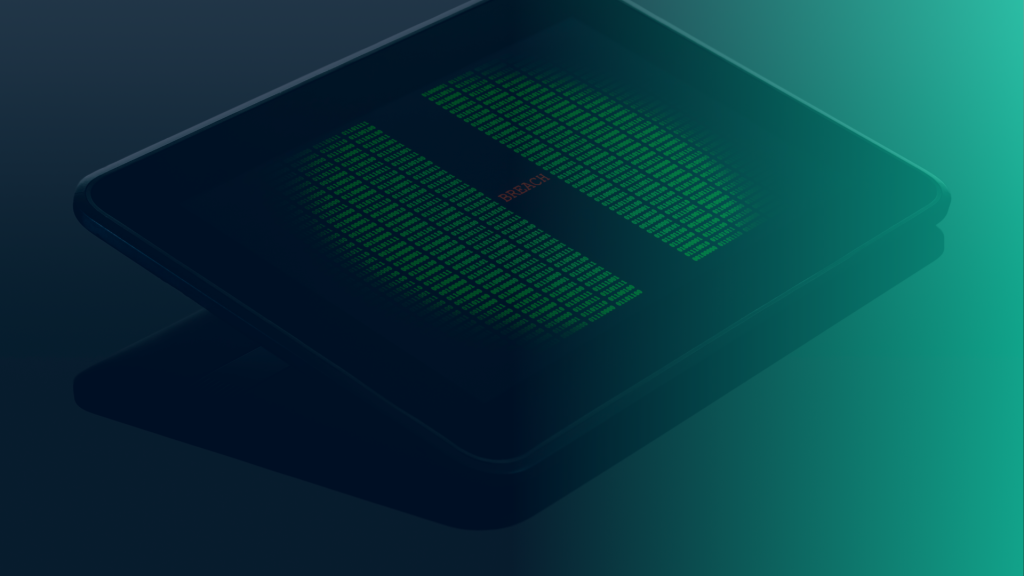Unleashing the Power of Zero-Trust Security: Safeguarding Networks in an Evolving Threat Landscape
Michael Pretorius
January 10, 2025

Imagine a scenario where your company’s most sensitive data, including financial records, customer information, and trade secrets, falls into the hands of cybercriminals. This unfortunate event occurred due to a simple phishing email that deceived an unsuspecting employee. Unfortunately, such incidents are becoming increasingly common in our digital world, where traditional security measures are no longer sufficient to thwart sophisticated cyberattacks. This is precisely where the concept of zero-trust security becomes invaluable. By adopting a zero-trust approach, which assumes that all users, devices, and networks are untrusted until proven otherwise, organisations can establish a comprehensive solution to safeguard against data breaches and cyber threats.
In this article, we will explore the concept of zero-trust security in depth, delving into its advantages and providing best practices for successful implementation. Whether you are a small business owner or a cybersecurity professional, this article aims to equip you with a thorough understanding of how zero-trust security can effectively protect your data in today’s ever-evolving threat landscape.
Overview of Zero-Trust Security
In the face of increasing data breaches and sophisticated attacks, traditional security measures fall short of protecting valuable information. Zero-trust security offers a modern approach that treats all users, devices, and networks as untrusted until proven otherwise. By implementing a zero-trust framework, organisations ensure that only authorised individuals can access sensitive data, regardless of location or origin.
Zero-trust security operates on the principle of distrusting every user, device, or application, unlike the blind trust of the traditional model. This is crucial as threats often arise from within networks, including malicious insiders and bypassed perimeter defences. In a borderless work environment, threats can come from anywhere, anytime.
The concept of zero-trust security emerged as a defence against cyber threats, evolving from the outdated “trust but verify” model that relied on network perimeters. Introduced in 2010, the zero-trust model emphasises “never trust, always verify,” verifying all access attempts regardless of location. Zero-trust security has gained popularity, protecting against insider threats, APTs, and cloud security threats by continuously verifying user and device identities. While adopted by organizations and security vendors, implementing zero-trust security is still a developing practice.
A practical example is enforcing multi-factor authentication (MFA) for all access requests, whether internal or external, ensuring only authorised users with passwords and secondary authentication gain system access.
Zero-trust security rests on three principles: verifying and authenticating identities, restricting access based on identities, and continuously monitoring access and activities.
Modern networks require zero-trust security for their granular security level. By leveraging cloud-based applications, security extends to any device, anywhere.
Advantages of Implementing the Zero-Trust Security Model
The adoption of the zero-trust security model offers numerous benefits to organisations. Currently, 72% of companies are in the process of implementing or have already implemented zero trust. Below are some of the advantages organisations can gain by embracing the zero-trust security model:
- Enhanced Security: Zero-trust security operates under the assumption that every user, device, and communication could potentially pose a threat. As a result, each access request undergoes meticulous scrutiny before being granted, significantly bolstering the overall security posture of organisations.
- Reduced Attack Surface: By considering every user and device as a potential threat, zero-trust security helps organisations minimise their attack surface. This is achieved through the implementation of stringent access controls, such as multi-factor authentication, which lowers the likelihood of successful attacks.
- Improved Visibility and Control: Zero-trust security grants organisations greater visibility into their system access by subjecting every request to verification and authentication. This real-time visibility enables prompt identification and response to potential threats.
- Streamlined Compliance: Implementing zero-trust security facilitates compliance with regulatory requirements. Organisations gain a clear understanding of who accesses their systems and their actions, simplifying the demonstration of adherence to appropriate security practices.
- Heightened Data Privacy: Zero-trust security empowers organisations to better safeguard sensitive data, including customer and financial information. Strict controls and monitoring mechanisms are implemented to tightly regulate access to sensitive data, mitigating the risks of data breaches and theft.
- Increased Agility: Zero-trust security fosters organisational agility by providing secure access to resources from any device or location. This flexibility enables rapid responses to evolving business needs and facilitates support for remote and mobile workers.
- Mitigated Insider Threats: Zero-trust security diminishes the risk of insider threats by assuming that every user and device could be potentially malicious. Organisations can implement robust access controls, like multi-factor authentication, to minimise the possibility of malicious or accidental insider activities.
- Cost Savings: The implementation of zero-trust security can yield cost savings for organisations. By eliminating the need for complex and expensive security solutions, businesses can adopt a set of simple yet effective security principles at a lower cost. Furthermore, by reducing the occurrence of security incidents, organisations can save on expenses associated with responding to breaches and restoring systems. In fact, companies that fully implemented zero trust have reported 43% savings on data breach costs.
What Threats Does Zero-Trust Security Address?
Zero-trust security offers the advantage of addressing various types of threats effectively. It mitigates risks associated with insider threats, ransomware attacks, phishing attempts, and more.
A key aspect of zero-trust security is the implementation of a robust authentication process. Users are required to authenticate themselves before gaining access to sensitive data or resources. This authentication can involve traditional methods like passwords, IP addresses, or biometric scans, as well as advanced techniques such as multi-factor authentication and two-factor authentication.
Furthermore, zero-trust security limits unauthorised user access by granting permissions only to necessary resources. For instance, if a user does not require access to a specific resource or application, they will not be able to log in without proper authorization from an administrator. This stringent access control protects confidential data and prevents unauthorised infiltration by malicious actors.
In conclusion, zero-trust security is a critical approach in today’s networks, addressing the ever-changing security landscape and the escalating number of cyber threats. Instead of relying on traditional perimeter-based defence strategies, zero-trust security takes a proactive stance by assuming all actors are untrusted until proven otherwise. By implementing this approach, organisations can effectively safeguard their networks and data from unauthorised access, maintain compliance with industry regulations, and defend against cyber-attacks that can result in financial losses and reputational damage. Furthermore, as remote work, cloud, and mobile technologies continue to gain prominence, zero-trust security enables organisations to secure their networks and data without compromising convenience or flexibility. In the rapidly evolving digital realm, zero-trust security is no longer a luxury but a necessity for protecting valuable assets and ensuring uninterrupted business operations.
Recent Posts
-
 National Health Data Exposed: What the NHLS Breach Means for South Africa’s Cybersecurity19 Sep 2025
National Health Data Exposed: What the NHLS Breach Means for South Africa’s Cybersecurity19 Sep 2025 -
 A Wake-Up Call for Data Security: The Cell C Breach05 Sep 2025
A Wake-Up Call for Data Security: The Cell C Breach05 Sep 2025 -
 Still on Windows 10? Here’s Why 2TS Is the Smart Choice17 Jul 2025
Still on Windows 10? Here’s Why 2TS Is the Smart Choice17 Jul 2025 -
 Preventing Digital Disruption in the Cold Supply Chain | Lessons from the Peter Green Ransomware Attack05 Jun 2025
Preventing Digital Disruption in the Cold Supply Chain | Lessons from the Peter Green Ransomware Attack05 Jun 2025